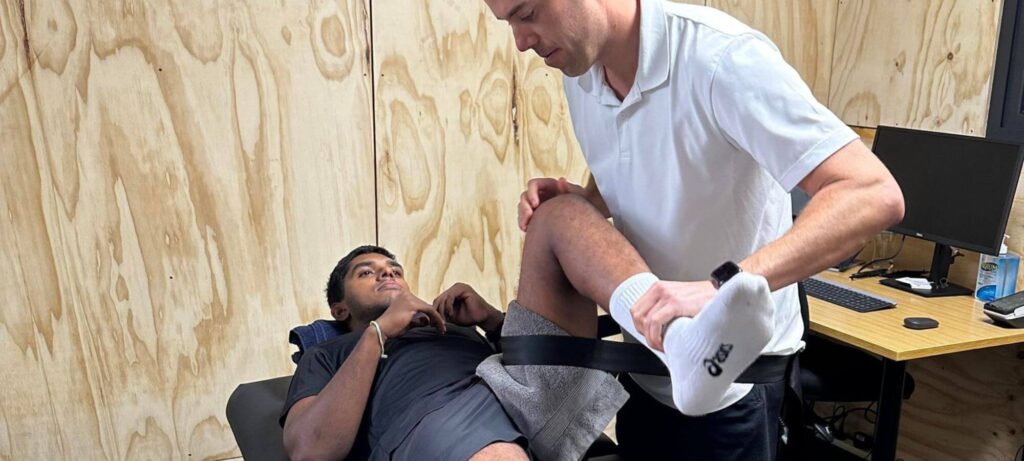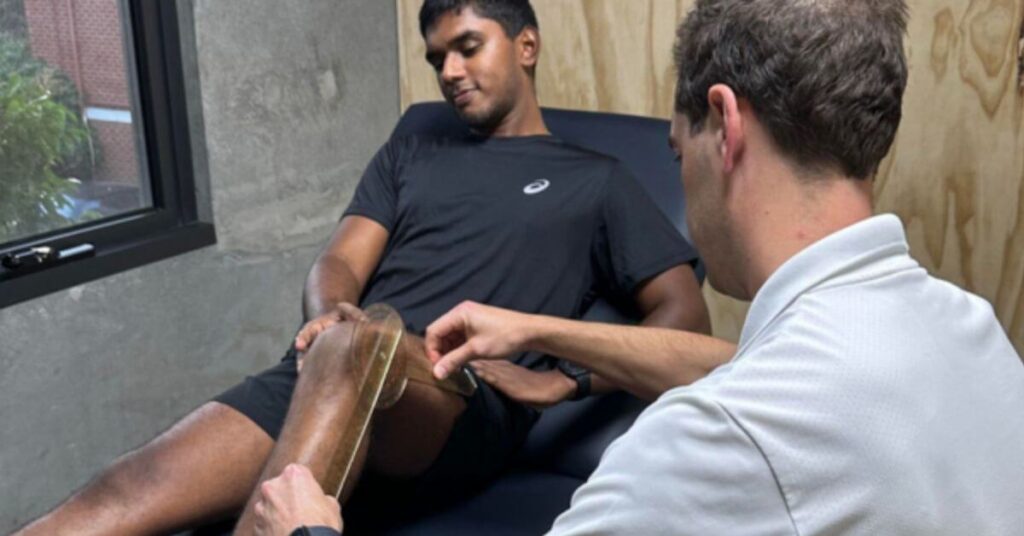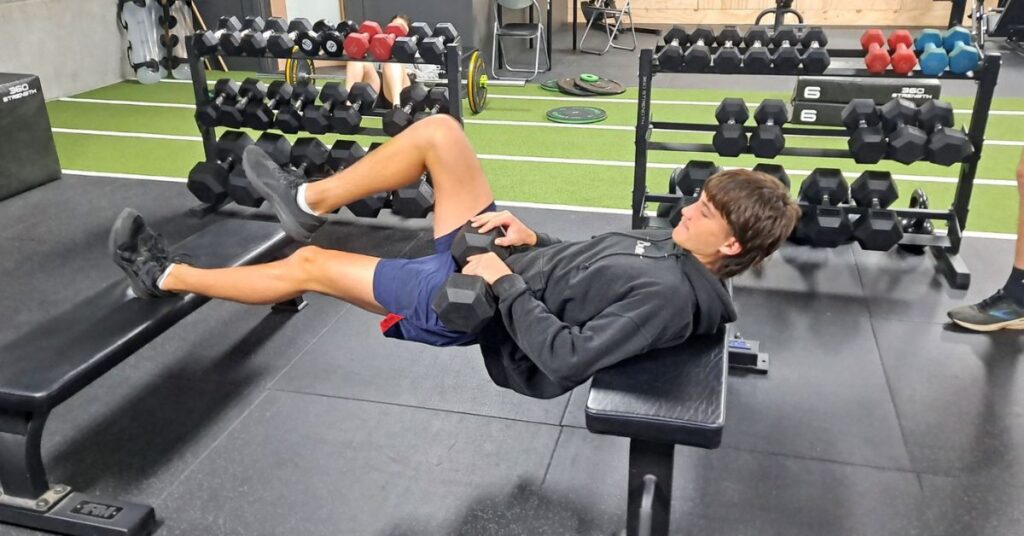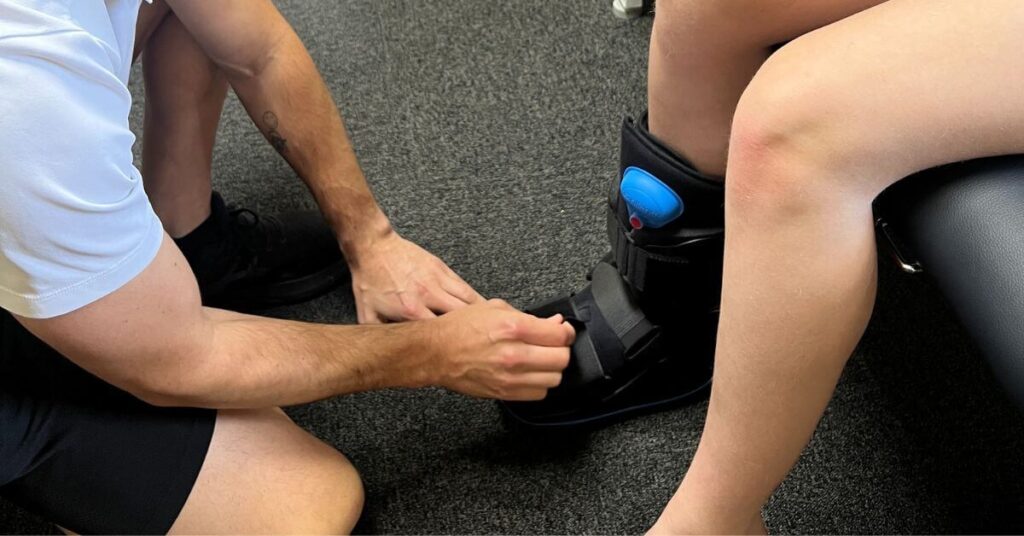Anterior Cruciate Ligament Rupture: How to Diagnose and Treat

As an experienced sports physiotherapist, I have seen firsthand the dedication and passion that players put into their training and performance as committed sports physiotherapists. What makes the world of sports so captivating is the excitement of victories and the unwavering courage to face obstacles. The possibility of an ACL injury is a darker aspect of this reality that we, as athletes and professionals, must face. Let’s find out the what, whys, and how of ACL injuries.
What is an ACL injury?
The anterior cruciate ligament (ACL) is a ligament located within the knee which provide stability, strength and proprioception. It is commonly injured during sports involving running and changes of direction. There are two main mechanisms of injury which are termed contact or non-contact ACL injuries. Contact injures happen from a direct blow by another player whereas non-contact injuries occur due to forces on the ligament during pivoting and cutting motions.
Concurrent damage to the knee is also common. An “unhappy triad” can occur with damage to the ACL, MCL, and meniscus. Players typically report hearing a “popping” sound with immediate pain and giving way of the knee. Swelling can quite quickly occur or within 1 – 2 days.
How is an ACL injury diagnosed?
Your physio will perform the lachman’s test along with several other manoeuvres to assess the likely damage to your knee. An MRI is also usually required to more accurately visualise the knee and for potential orthopaedic consultation.
How is an ACL injury treated?
Recovery and return to sport from an ACL rupture typically take 12 months. Three main ACL treatment options are available:
Surgical:
Surgery is the most common treatment option in Australia. It involves an orthopaedic procedure replacing the ruptured ACL with either the patient’s own hamstring or patella tendon. The operation gives the injured person the best chance of returning to sports that require pivoting and changes of direction. However, surgery is not a fail-safe solution, with re-ruptures seen in many athletes who return to sport.
Non-Surgical:
Non-surgical management involves rehabilitating the knee without an intact ACL. Many people can return to everyday life and sports without an ACL. This option is preferred for people not aiming to return to high-level sports and for teenagers who have not fully grown. Rehab periods can be quicker and less costly with this option.
Bracing
Bracing is a more recent treatment option that has yet to be fully researched for long-term outcomes. It involves locking the knee in a 90-degree brace for several months. This can allow the ACL to regrow on its own without surgery. Bracing is only effective for certain sub-groups of ACL injuries but can be a great way to avoid surgery and damage to the hamstring or patella tendons via harvesting.
An Anterior Cruciate Ligament (ACL) tear is a common sports-related injury, and it can cause a range of symptoms. The most common symptoms of an ACL tear include:
- Sudden and severe pain
- Swelling of the knee joint
- The feeling that your knee is about to give up
- A loud “snap” or “pop” when the injury was incurred
- Restricted motion in your knees
- Difficulty walking
An untreated ACL injury can cause you bigger problems in the long run, such as chronic knee pain and unstable knees. Minor or partial ACL tears can be treated without injury; however, it’s always a good idea to consult your physician regarding your best treatment option.
It might be difficult to estimate an exact healing period after a partial ACL injury because recovery differs greatly across people. In rare instances, people may get back on their feet in three months with the proper mix of physical therapy and rehabilitation. But it’s crucial to understand that the majority of patients often need a longer recuperation period, frequently lasting six to eight months. The healing process can last up to 12 months in some circumstances, especially those with more serious injuries or special aims.




